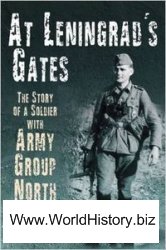Forecasting the future of historical archaeology is complicated by the continuing tensions over the extent to which historical archaeology should focus on the study of a globalizing process (the social creation of the modern world, usually via the development of capitalism, as proposed by Orser), or its antithesis: the ‘messiness’ of local contexts and small-scale experience (as proposed by Johnson). The different trajectories in the development of historical archaeology between the Old World and the New further complicate this situation. In the Old, historical archaeology is most often an extension of the archaeology of long-standing literate societies; it is therefore methodologically defined as a discipline which has unique access to a distinctive class of material (documents). In the New, despite the existence of writing in some precolonial cultures, the abrupt appearance of colonizing nations means that historical archaeology is more often tightly defined according to a time period: as post-Columbian or according to the era of European colonial expansion. The expansion of European powers in places with long Indigenous histories, such as the Americas, Australia, and South Africa, has inevitably meant that historical archaeology in the New World has focused heavily on the many distinctions between Indigenous and colonizer pasts. These core epistemological issues, together with the explicitly political agenda of much postprocessual archaeology and the exploration of global/local tensions, suggest some of the ways in which the goals of historical archaeology might develop in the future. One such avenue moves beyond the archaeology of the colonial period as a product of a particular set of economic conditions or attitudes, to the archaeology of the more devastating - and historically rarely visible - social aspects of the colonial process (see Postprocessual Archaeology).
There are several ways in which historical archaeology is beginning to do this. Myths of the frontier, or the enduring narratives created around the behavior of early colonizers and their relationships to the colonized, are one example. Constructed through folkloric tales of pioneering behavior, frontier myths are often materialized through the domestic evidence for life in a socially and economically marginal environment. Claims for defensive architectural features in everyday domestic structures, for instance, are one way in which historical archaeological sites are factored into stories that link such evidence to the creation of colonial mindsets and a fear of the unknown. Similarly, the reshaping of old forms of social identity in new contexts, the origins of notions of race as a defensive tactic in the late eighteenth and early nineteenth centuries, or the construction of ‘whiteness’ as a normative category in opposition to those it colonized, are current topics that are beginning this exploration.
More significantly, in line with an interest in power, ideology, and colonialism, it is likely that historical archaeology will become increasingly linked to crucial postcolonial issues, at least in twenty-first century settler cultures. Many aspects of the recent past are still deeply ingrained in the social memory of descendent communities today, such as the removal of Indigenous people from their lands, the reshaping of local communities to suit wider political and economic agendas, even the deliberate erasure of Indigenous groups through violence. Massacre sites, or places where Indigenous people met with violence and death at the hands of settlers or other colonizing groups are just beginning to come into historical archaeological focus. These sites of negative heritage - places for which the memories are painful and raw despite the passage of time, and that often hold volatile, conflicting meanings - situate trauma in the landscape, but are seldom explored because of the variety of painful emotions they generate. They are rarely, if ever, recorded in historical documents, but live in the oral traditions of Indigenous peoples. As Indigenous people increasingly take control of their own heritage and the ways in which their past is presented, these sites will form components of wider discourses on settler culture and the ‘shared histories’ that much historical archaeology currently attempts to investigate.
A move away from studying ‘races’, ‘ethnicities’, or other essentialized groups (but not necessarily the essentializing process which constitutes groups by comparison to each other) toward the social construction of difference and the various material ways in which this can be signaled or negotiated suggests a third potential direction for historical archaeological practice: a focus on the range of imagined identities that are constructed under modernity and its globalizing forms. Appadurai has alluded to a growing rootlessness in modern society as identities become less territorialized and the opportunities this creates for constructing an imagined past that in some cases may never have existed. This ‘invented nostalgia’ can also be linked to a growing emphasis on cultural tourism and visitor experiences of historical archaeological sites and thus to wider concerns with community archaeology, local agendas, and identity politics in a globalized world. There is a strong element of contemporary identity which reaches out to the recent past for its direction. There is also, however, an element that suggests that the ruptures brought about by colonialism in part require the reinvention of tradition and the recognition of negative heritage as an essential component of the present.
See also: Historical Archaeology: As a Discipline; Methods; Postprocessual Archaeology; Processual Archaeology.




 World History
World History









